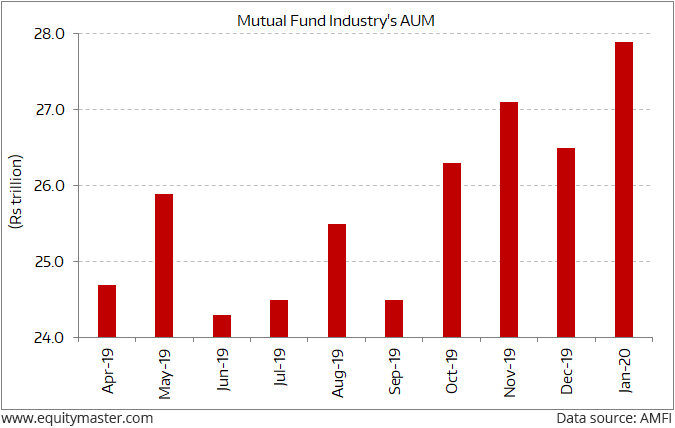Sensex Sinks 2,500 Points; Axis Bank And Hero MotoCorp Tank 10%
Stock markets in India crashed further in the afternoon session, tracking global equities which were rattled after the World Health Organisation declared the novel coronavirus outbreak a "pandemic".
Globally, over 119,400 confirmed cases of Coronavirus have been reported among which over 4,300 people have succumbed to the virus. Wall Street stocks plunged on Wednesday, with the Dow confirming a bear market for the first time since the financial crisis.
The BSE Sensex is trading down by 2,531 points (down 7.1%) at 33,150 levels, its lowest level in 17 months. Axis Bank (down 11%) and M&M (down 10%) are the top contributors to the Sensex's fall today.
Meanwhile, the NSE Nifty opened below the crucial mark of 10,000 for the first time since March 26, 2018 and is trading around 32-month low level of 9,700, down 751 points (down 7.2%).
The BSE Mid Cap index and the BSE Small Cap index are trading down by 7.8% and 8.9%, respectively.
Among the sectoral indices, metal stocks, banking stocks and realty stocks are witnessing most of the selling pressure.
Speaking of Indian stock markets, in one of the recent podcast, we had shared a special episode from investor hour...
In this emergency episode of the Investor Hour, Rahul Goel talks to Vijay Bhambwani, who he calls India's #1 trader.
Vijay dives deep in this "coronavirus" situation and presents a picture which we believe would be extremely beneficial to any investor or trader.
They talk stocks, commodities, bullion and currency.
For each of these assets, they talk what's around the corner, and how one should position oneself for potential gains.
Whatever you do, don't miss this emergency issue of the Investor Hour!
Towards the end, Vijay shares a very unique perspective on how to allocate assets. Don't miss that!
In news from the banking sector, Bandhan Bank's MD and CEO Chandra Sekhar Ghosh said that the bank will gradually lower exposure to microcredit in percentage terms over the next three to five years.
When the private lender started operations in August 2016, microcredit constituted 85% of its total loan portfolio.
Ghosh said that housing loans make up for 30% of the credit portfolio and MSME 9%.
He added that, the bank's total exposure stood at Rs 654.6 billion, with a deposit base of Rs 550 billion and CASA level at 34%, as of December 2019.
He said the bank is working hard towards meeting regulatory compliance due to which restrictions on the opening of new branches have been lifted by the RBI.
Bandhan Bank share price is presently trading down by 11%.
In other news, the Yes Bank crisis is having a contagion impact on other private banks, forcing these lenders to clarify their position and address depositor concerns on their capital base and liquidity.
RBL Bank, Karnataka Bank and South Indian Bank, in separate communications to their customers, have clarified that rumours around their financial health and stability are untrue and not based on facts.
This also follows an RBI clarification about the safety of banking deposits on Sunday.
Yes Bank has been put under a moratorium by the Reserve Bank till April 3, and customers are not allowed to withdraw more than Rs 50,000 from their accounts.
In one of the articles, we have written about the entire timeline of how YES Bank went from a stock market darling to a pariah.
Moving on to news from the mutual funds space, the spike in market volatility has prompted mutual fund (MF) investors to lap up units of gold exchange-traded funds (ETFs), with the category seeing highest flows since 2008.
In February, net flows into the schemes stood at Rs 14.8 billion, which was seven-times of flows ETFs received in previous month.
In 2019-2020, gold prices are up 37% in domestic markets. Since August 2018 lows, the prices are up 48%.
The government recently launched tenth series of sovereign gold bonds to tap investor appetite for gold-linked products.
However, industry experts say that entering gold-linked products at current levels may lead to muted returns, as the prices have already run-up with significant gains.
Meanwhile, systematic investment flows (SIPs) in the MF industry saw a marginal dip in February at Rs 85.1 billion.
Equity flows coming into the industry have so far been holding up, with February tally coming in at 11-month high. The flows were at Rs 108 billion, 37% higher than previous month's tally.
Over the last one-month period, large-cap funds have given negative return of 12.8%. The mid and small-cap funds have given negative returns of 11% apiece.
Speaking of mutual funds, Tanushree Banerjee wrote to you about an irreversible megatrend in the mutual funds space. It is the growth in the assets under management (AUM) of the Indian mutual fund industry.
This is evident in the chart below...
New High for Mutual Fund AUM

Here's what Tanushree wrote about it in a recent edition of The 5 Minute WrapUp...
- After a few hiccups in the first half of this fiscal, strong inflows into mutual funds have taken the industry's AUM to a new high.
Can we call it a saturation point?
Far from it!
The total AUM of India's mutual fund industry is just about 13% of India's GDP.
This megatrend of financialisation of savings has a long runway ahead of it.
Disclosure: Equitymaster Agora Research Private Limited (Research Analyst) bearing Registration No. INH000000537 (hereinafter referred as 'Equitymaster') is an independent equity research ...
more


